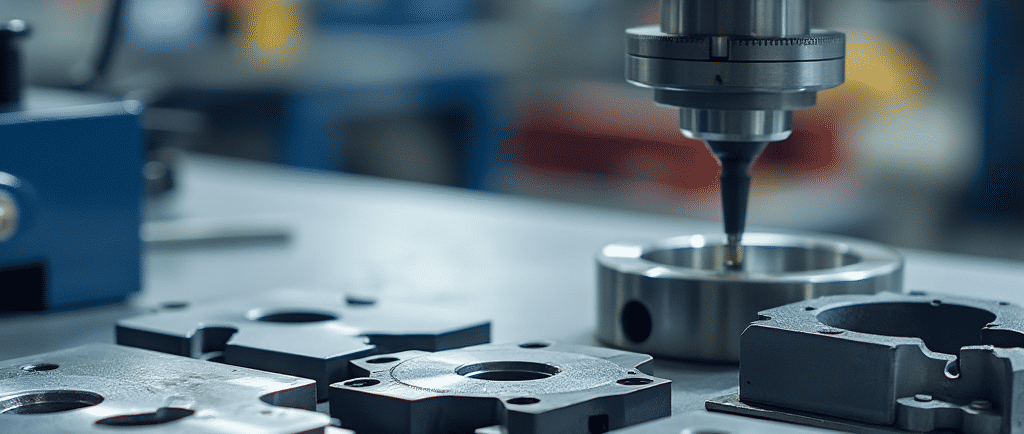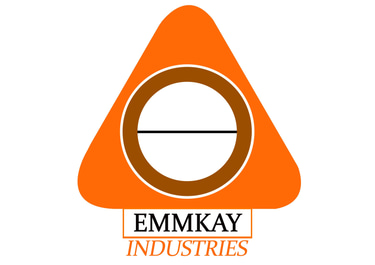Quality and Longevity of Your Tablet Tooling


Ensuring Quality and Longevity of Your Tablet Tooling
In the highly competitive world of tablet manufacturing, maintaining quality and longevity of your tooling is essential for optimal production efficiency.
At EMMKAY Industries, we believe that a proactive approach to material selection, procurement, maintenance, and heat treatment can significantly enhance tooling performance. This blog post delves into the critical aspects of ensuring your tablet tooling remains robust, reliable, and ready for high-volume production.
1: The Importance of Material of Construction (MOC) in Tablet Tooling
Material selection is the cornerstone of durable tablet tooling. The material of construction (MOC) used for manufacturing dies and punches directly influences their strength, resistance to sticking, and overall longevity.
For example, materials such as HCHC (AISI D2) and OHNS (AISI O1) are often chosen for their superior hardness and wear resistance.
Key Considerations:
Strength and Durability: The right MOC ensures that tooling withstands repetitive pressure and abrasion during tablet compression.
Anti-Sticking Properties: Materials with optimal surface properties reduce sticking, which minimizes downtime and maintains tablet quality.
Cost-Effectiveness: Although high-quality materials may come at a premium, the reduction in maintenance frequency and tool replacement costs results in long-term savings.
Investing in the proper material selection helps ensure that every tablet meets rigorous quality standards, while also optimizing production efficiency over the long haul.
2: Best Practices for Tablet Tooling Procurement
Efficient procurement is just as crucial as manufacturing precision in ensuring the longevity of tablet tooling. This sections outlines the essential steps to follow during the procurement process:
Checking Drawings and Specifications: Carefully review technical drawings to verify that tooling conforms to specified dimensions and tolerances.
Material Approval: Confirm that the materials used (such as HCHC or OHNS or Other Composition as discussed) have undergone rigorous quality checks.
Quotation and Negotiation: Obtain competitive pricing while ensuring that quality standards are not compromised.
Inspection: Conduct thorough inspections upon delivery, aligning with predefined quality assurance protocols.
Record-Keeping: Maintain comprehensive records of tooling details, which facilitate future audits and maintenance schedules.
By following these best practices, manufacturers can secure tooling that not only meets requisite standards but also supports sustainable production cycles with minimal defects.
3: Maintaining Your Tablet Tooling for Optimal Performance
Maintenance is a critical factor in extending the life of your tablet tooling. Consistent handling, meticulous cleaning, and proper storage are key to keeping your tools in top condition. This section emphasizes several maintenance best practices:
Handling: Use gloves during manipulation to prevent inadvertent contamination from oils and moisture.
Cleaning: Regular cleaning not only removes residues but also reduces the risk of sticking. Implement procedures that include ultrasonic cleaning where appropriate.
Storage: Store tooling in a clean, dry environment or use protective layers (such as non-toxic, FDA-compliant oils) to shield against corrosion.
Die Taper: Pay special attention to concepts like the die taper. An optimal die taper minimizes tablet defects such as capping, ensuring better ejection and tablet integrity.
Integrating a structured maintenance routine ensures that tablet tooling consistently performs at its best, reducing production downtimes and enhancing overall quality.
4: Understanding Annealing and Its Benefits for Tooling Life
Annealing is a vital heat treatment process that can significantly extend the life of your tooling, particularly for fragile punch tips. This post explores the annealing process and its benefits:
Annealing Process: By heating and then gradually cooling the tooling, annealing reduces internal stresses, which in turn minimizes wear during tablet compression.
Improved Punch Set Life: The heat treatment softens brittle areas while retaining necessary strength, leading to reduced chipping and cracking.
Regular Inspection: Routine inspections help in determining the optimal time to retire and replace punch sets. Adhering to standard operating procedures (SOPs) ensures that expired tooling is effectively phased out.
Wear and Tear Reduction: Regular annealing, when paired with correct maintenance practices, can significantly curb the gradual degradation of punch tips and dies.
By understanding and applying annealing, manufacturers can improve the robustness and reliability of their tooling, which translates to fewer operational interruptions and more consistent tablet quality.
Summary
This blog post is on ensuring the quality and longevity of your tablet tooling covers:
Material of Construction: Choosing high-quality materials like HCHC (AISI D2) or OHNS (AISI O1) to boost durability and reduce sticking. Or use EMMKAY Special Alloy Steel which balances cost and durability.
Procurement Best Practices: Following a meticulous process—from drawing checks to record-keeping—to secure robust tooling.
Maintenance Protocols: Implementing proper handling, cleaning, and storage procedures, along with optimal die taper management, to sustain tooling performance.
Annealing Benefits: Employing heat treatment processes to enhance tool life and mitigate wear issues.
For additional insights and guidance on high-performance tablet tooling, visit EMMKAY Industries today. Our comprehensive approach and advanced tooling solutions empower you to achieve superior efficiency and quality in your tablet manufacturing process.





